Sadar Bazaar Jodhpur
In the heart of Jodhpur lies a place full of color, culture, and commerce — Sadar Bazaar. This bustling market is the soul of the Blue City, drawing locals and tourists alike. Located near the famous Ghanta Ghar or Clock Tower, Sadar Bazaar is where Rajasthani tradition meets modern-day hustle. From early morning until evening, the market’s narrow streets fill with the voices of shopkeepers, the scent of local snacks, and the hum of eager shoppers. The market is more than just a shopping spot; it is a glimpse into Jodhpur’s daily life. The streets are flanked by old buildings, vibrant fabrics, camel leather goods, and handcrafted treasures that reflect Rajasthan’s heritage. Whether you're here for serious shopping or simply to soak up the atmosphere, Sadar Bazaar offers a unique experience where culture and commerce blend perfectly in a setting that has remained charmingly old-world.
Rich history
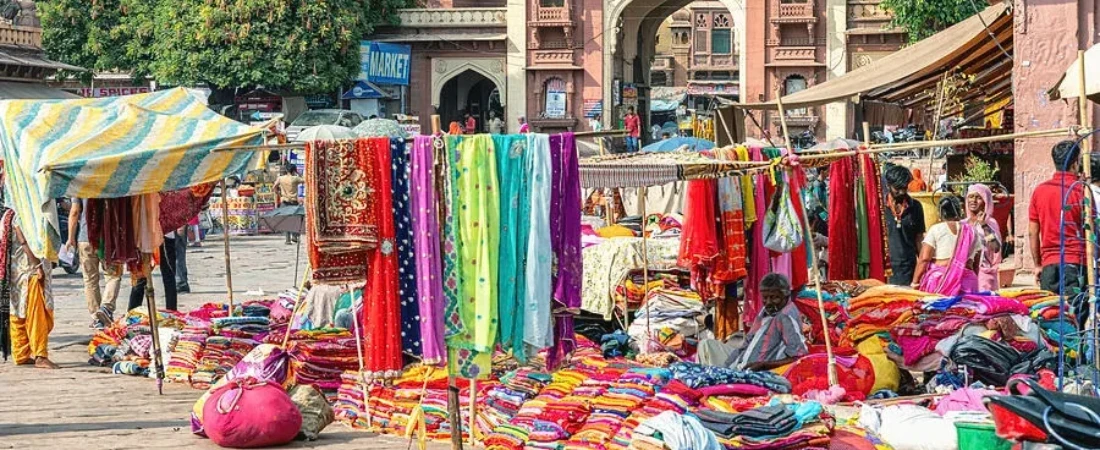
Sadar Bazaar is not just famous for its shopping — it has a historical charm rooted in the royal past of Jodhpur. The iconic Clock Tower, built by Maharaja Sardar Singh in the late 19th century, stands at the center of the market and is a symbol of the city. It is from this tower that the market takes its name. Over the years, the area surrounding the tower grew into a lively trade center. Traders from nearby towns and villages would gather here to sell textiles, spices, and handmade goods. Today, while modern developments have reached Jodhpur, Sadar Bazaar retains its original character. The buildings still feature traditional Rajasthani architecture, with carved balconies and jharokhas that speak of an earlier time. The market’s layout, with crisscrossing lanes and hidden corners, invites visitors to explore slowly, discovering something new at every turn. This blend of history and activity makes Sadar Bazaar an essential part of Jodhpur’s identity.
What to shop
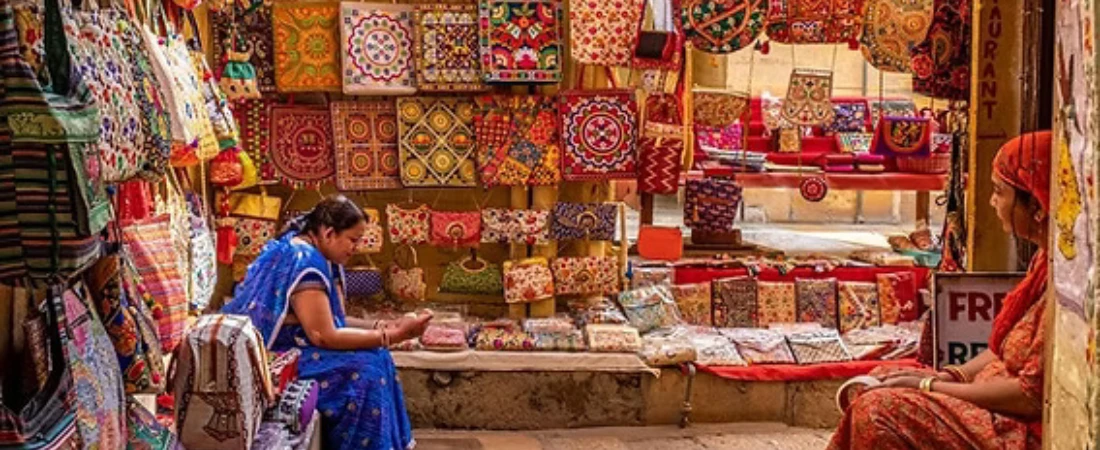
Sadar Bazaar offers a rich and diverse shopping experience that reflects the culture and creativity of Rajasthan. The first thing that grabs your attention is the explosion of color — Bandhani fabrics in reds, yellows, and blues hang from shopfronts, fluttering in the breeze. Bandhani is a traditional tie-and-dye technique, and the sarees, dupattas, and turbans made here are popular among locals and tourists alike. Alongside textiles, the market is known for its unique handicrafts. Intricately carved wooden boxes, brass artifacts, antique clocks, blue pottery, and marble figurines are just a few of the treasures you can find. These items are often handmade by skilled artisans from nearby villages. Leather goods are another specialty — camel leather bags, belts, and wallets line the shelves of many shops. You’ll also find embroidered mojris, or traditional Rajasthani shoes, in many colors and patterns. Everything here reflects local artistry, and each piece tells a story of the desert, its people, and its culture.
Fragrance of spices
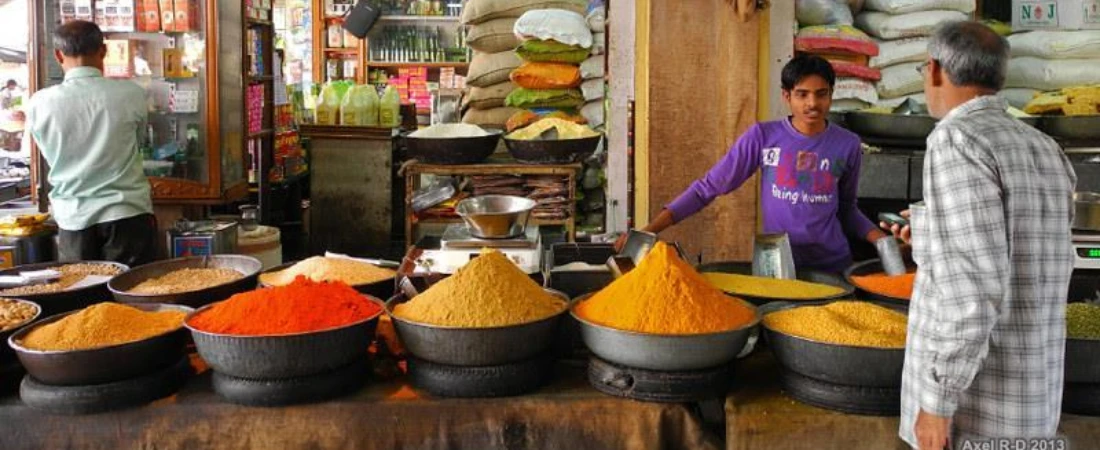
Among the many highlights of Sadar Bazaar, the spice stalls stand out as a sensory delight. Walking through the market, you'll catch the unmistakable aroma of freshly ground masalas. These spices are a crucial part of Rajasthani cooking, and many of them are sourced from nearby farms. One of the most famous items is Mathania red chili, known for its vibrant color and medium heat. Turmeric, coriander, fennel, and cumin are also available in bulk, often stored in large jute sacks or brass containers that add to the visual charm. Spice vendors are usually happy to explain the difference between various blends and may even offer tastings. Along with spices, some shops also sell local pickles, dry fruits, and herbal teas. These products are not only flavorful but also make for excellent souvenirs to take home. Shopping for spices at Sadar Bazaar is not just about buying ingredients — it’s about connecting with the food culture of Rajasthan.
Jewelry and accessories
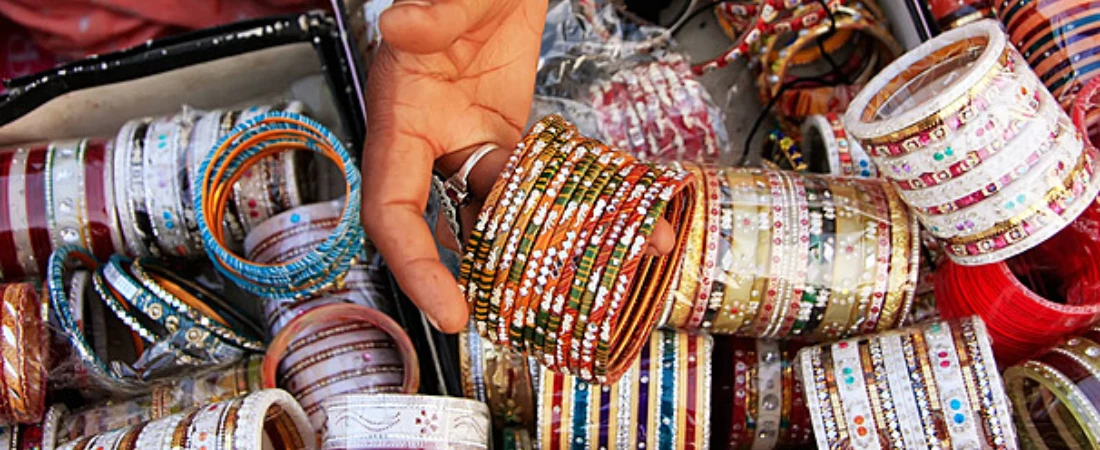
Another attraction of Sadar Bazaar is its beautiful collection of Rajasthani jewelry. The market has several shops and stalls that specialize in traditional silver pieces, tribal designs, and handcrafted accessories. From chunky necklaces and jhumkas to anklets, toe rings, and bangles, the variety is endless. Many pieces are made using oxidized silver and embedded with colorful stones or beads, making them both bold and elegant. These jewelry designs are inspired by royal Rajputana heritage and are perfect for adding a traditional touch to modern outfits. The market also offers lac bangles and glass bangles in vivid colors, often sold in sets that sparkle under the sun. Besides jewelry, you can find embroidered clutches, beaded handbags, and handmade scarves. These accessories are not only affordable but also tell a story of craftsmanship passed down through generations. Shopping for jewelry in Sadar Bazaar is like stepping into a treasure chest, full of surprises and timeless beauty.
Final thoughts
Sadar Bazaar Jodhpur is not just a shopping location — it is the heartbeat of the Blue City. Every visit offers a unique blend of cultural discovery, historical charm, and vibrant local life. Whether you're in search of souvenirs, spices, jewelry, or simply the joy of wandering through a colorful Rajasthani street, this market has something for everyone. It provides a deeper connection to Jodhpur, far beyond the walls of its forts and palaces. Here, you meet the people who create, cook, and sell with passion and pride. You hear the language, feel the rhythm of daily life, and become part of a living tradition. Sadar Bazaar is not a place to rush through — it is a space to explore, enjoy, and remember. If you're planning a trip to Jodhpur, make sure Sadar Bazaar is at the top of your list. It’s where the soul of the city comes alive — colorful, flavorful, and endlessly fascinating.


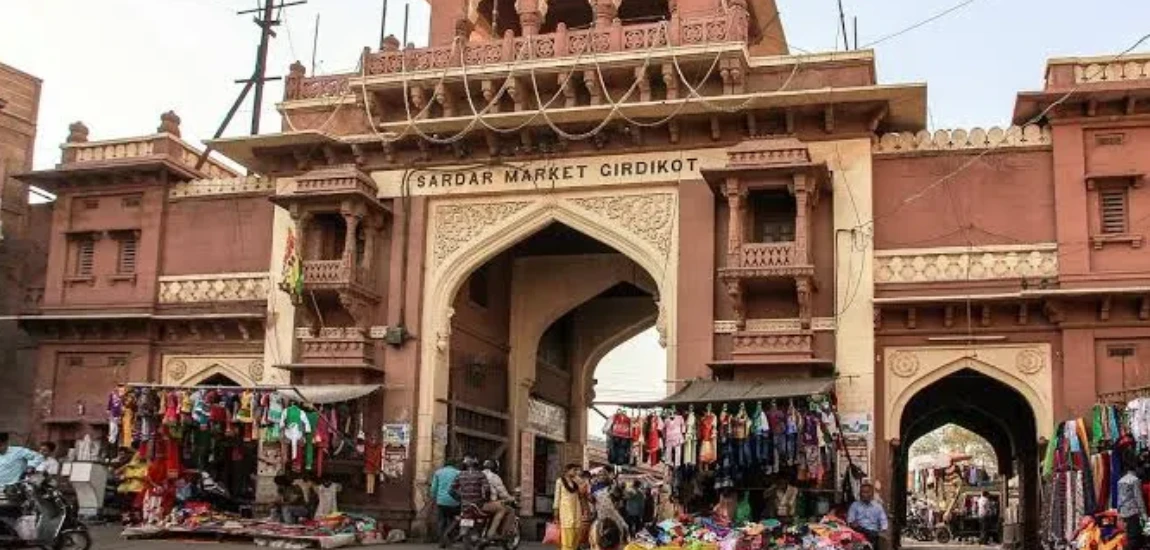
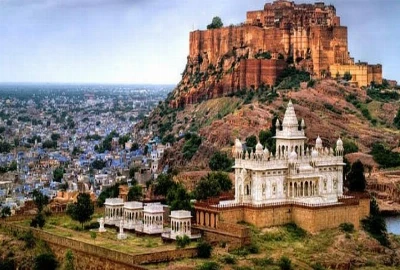
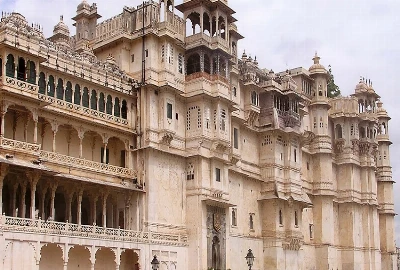


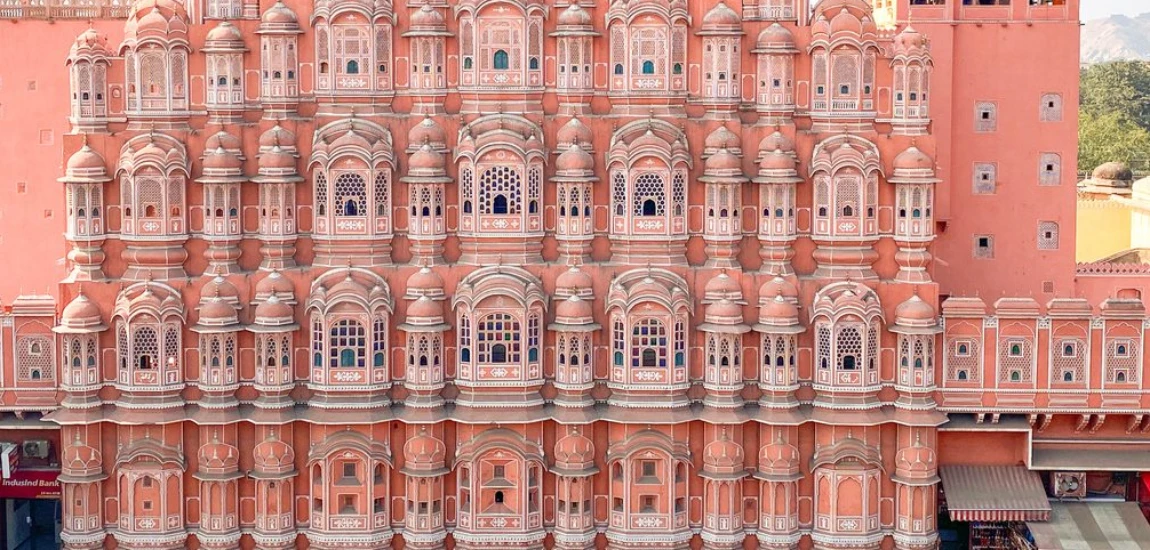
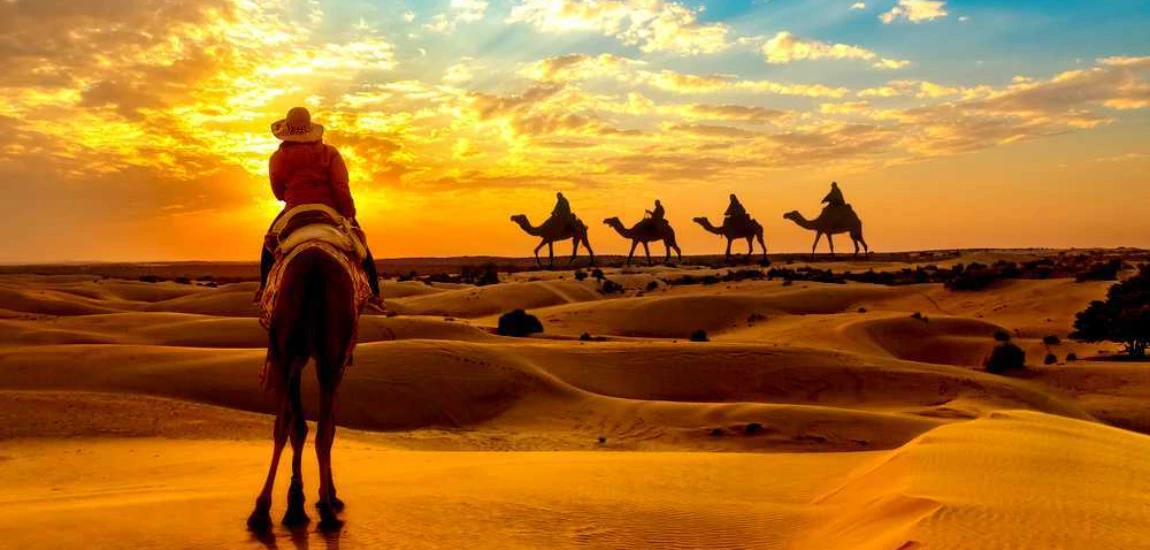
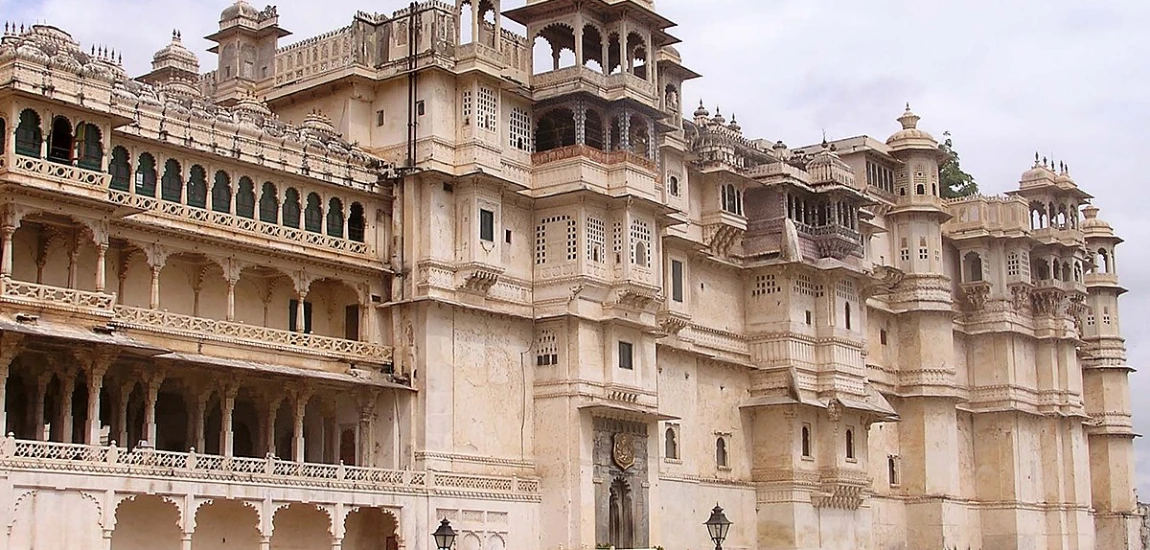
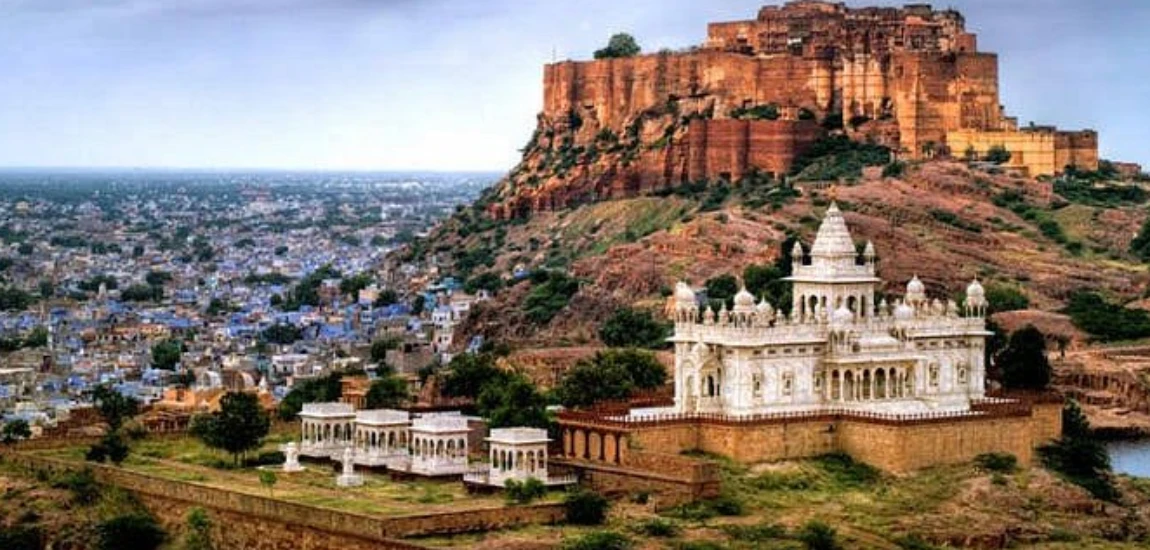
Leave a comment